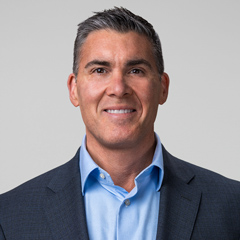Voluntary Benefits
Published by Jeff Hillgoth on April 9th, 2025
Whether you’re on the broker, enroller, or carrier side of the business, you’ve likely come to understand the hundreds of different acronyms and benefits jargon used throughout our industry.
Knowing phrases like SBC (summary of benefits coverage) or GI (Guaranteed Issue) might come as natural to you as riding a bike. But, for the clients we serve —and likely the newer folks working in the industry —jargon can make understanding products and benefits extremely difficult. Without the proper insight into what these things represent, what you’re trying to communicate might be getting lost in translation.
It wasn’t until I became youth basketball coach that I learned the value of simply asking questions of my audience. If you, as the educator, take the time to check in with your audience it goes miles towards helping you better position yourself and bridge the gap in communication.
What we often don’t realize as we progress to becoming mentors, business leaders or coaches is that we tend to assume the group or individuals we’re communicating with knows more than they do. You may even approach educating your audience with the attitude of, “What worked for me should work for them,” or by using repetition and the “Rule of 7”, a principle that says you need to hear something 7 times in order for it to stick. But these approaches may only get your audience halfway to where they need to be.

Because these approaches were how I was taught, I used them myself when I began coaching youth basketball. I assumed if I just repeated phrases enough times (like “Pick-n-roll,” or “Get big”), my players would eventually understand what I was saying. So, like the mentors and coaches before me, right from the jump I used phrases familiar to me without much context. Nobody asked any questions, which I thought was a good sign. But after a few practices, I noticed many kids were still confused and weren’t understanding what I was asking them—it wasn’t sticking.
Out of frustration, I finally asked, “Is what I’m saying make sense to any of you?” That’s the moment I learned that asking your audience the question —rather than them having to ask you – can help bridge the gap in communication.
Once I asked my players the question of if they understood, I not only gave them an opportunity to speak up, but it made me realize as the educator that I needed to change how I was communicating and switch up my language / jargon to something that made sense to them. And once I met them where they were, practices became better, we began to win games, and the players started to have more fun, too.
Relying on your audience to ask questions is tough. In fact, one study showed that 77% of college students reported that they sometimes felt uncomfortable asking questions themselves1. In the insurance industry it’s no different, especially as it relates to educating employer clients or employees on their benefits.
In our jobs, we might only get a meetings worth of time to get our audience on the same page as us. This means that we have to be strategic with engaging our audiences and giving them multiple opportunities to speak up.
If you can integrate asking questions such as, “How does that sound to you?” or “What are your thoughts on this?” into your pitches, meetings, or presentations, you’ll see lots of benefits. Doing so:
It’s one thing to have great communication, but anyone can communicate well —even with bad products. What makes Trustmark so special is everyone’s drive to pair effective communication with best-in-class products. No matter the department, Trustmark takes pride in asking meaningful questions to help brokers, employers, and employee understand the benefit solutions we offer. And when you can pair that with a leading life with LTC product, you can truly set your customers up for success.
1Call on me! Undergraduates’ perceptions of voluntarily asking and answering questions in front of large-enrollment science classes. NIH. 2021.
Knowing phrases like SBC (summary of benefits coverage) or GI (Guaranteed Issue) might come as natural to you as riding a bike. But, for the clients we serve —and likely the newer folks working in the industry —jargon can make understanding products and benefits extremely difficult. Without the proper insight into what these things represent, what you’re trying to communicate might be getting lost in translation.
It wasn’t until I became youth basketball coach that I learned the value of simply asking questions of my audience. If you, as the educator, take the time to check in with your audience it goes miles towards helping you better position yourself and bridge the gap in communication.
Improving the way we educate others
In the early stages of your career, you may assume your lack of understanding regarding industry jargon will go away with time. That there’s a significant amount of time where you’re expected to navigate the muddy waters. As expected—and like many others new to insurance industry—I assumed that this was the way it worked for everyone, so I never questioned it.What we often don’t realize as we progress to becoming mentors, business leaders or coaches is that we tend to assume the group or individuals we’re communicating with knows more than they do. You may even approach educating your audience with the attitude of, “What worked for me should work for them,” or by using repetition and the “Rule of 7”, a principle that says you need to hear something 7 times in order for it to stick. But these approaches may only get your audience halfway to where they need to be.

Because these approaches were how I was taught, I used them myself when I began coaching youth basketball. I assumed if I just repeated phrases enough times (like “Pick-n-roll,” or “Get big”), my players would eventually understand what I was saying. So, like the mentors and coaches before me, right from the jump I used phrases familiar to me without much context. Nobody asked any questions, which I thought was a good sign. But after a few practices, I noticed many kids were still confused and weren’t understanding what I was asking them—it wasn’t sticking.
Out of frustration, I finally asked, “Is what I’m saying make sense to any of you?” That’s the moment I learned that asking your audience the question —rather than them having to ask you – can help bridge the gap in communication.
Once I asked my players the question of if they understood, I not only gave them an opportunity to speak up, but it made me realize as the educator that I needed to change how I was communicating and switch up my language / jargon to something that made sense to them. And once I met them where they were, practices became better, we began to win games, and the players started to have more fun, too.
Why asking questions matters in the insurance industry

Relying on your audience to ask questions is tough. In fact, one study showed that 77% of college students reported that they sometimes felt uncomfortable asking questions themselves1. In the insurance industry it’s no different, especially as it relates to educating employer clients or employees on their benefits.
In our jobs, we might only get a meetings worth of time to get our audience on the same page as us. This means that we have to be strategic with engaging our audiences and giving them multiple opportunities to speak up.
If you can integrate asking questions such as, “How does that sound to you?” or “What are your thoughts on this?” into your pitches, meetings, or presentations, you’ll see lots of benefits. Doing so:
- Serves as a knowledge check —are your clients really understanding what you’re telling them?
- Gives you an opportunity to address misunderstandings
- Invites your audience to participate and engage in a conversation rather than a one-sided transfer of knowledge
- Let’s you learn more about what they value, their challenges and what stands out to them, specifically, and how you can better support their needs
- Helps you understand their language so you can shape your message in a way that makes sense to them —often they may be describing the same things you are, just with different words or without the insurance jargon
- Demonstrates that you genuinely care about them and their input on the discussion
…
Part of the reason why I wanted to come to Trustmark was because of the organizations emphasis on communication and asking questions.It’s one thing to have great communication, but anyone can communicate well —even with bad products. What makes Trustmark so special is everyone’s drive to pair effective communication with best-in-class products. No matter the department, Trustmark takes pride in asking meaningful questions to help brokers, employers, and employee understand the benefit solutions we offer. And when you can pair that with a leading life with LTC product, you can truly set your customers up for success.
1Call on me! Undergraduates’ perceptions of voluntarily asking and answering questions in front of large-enrollment science classes. NIH. 2021.
